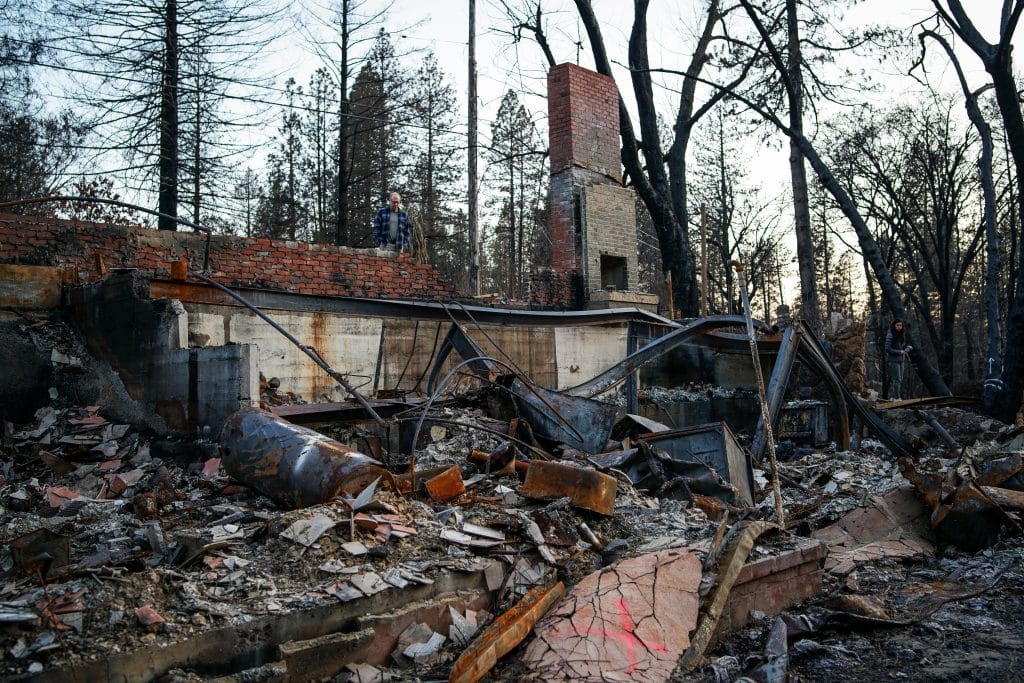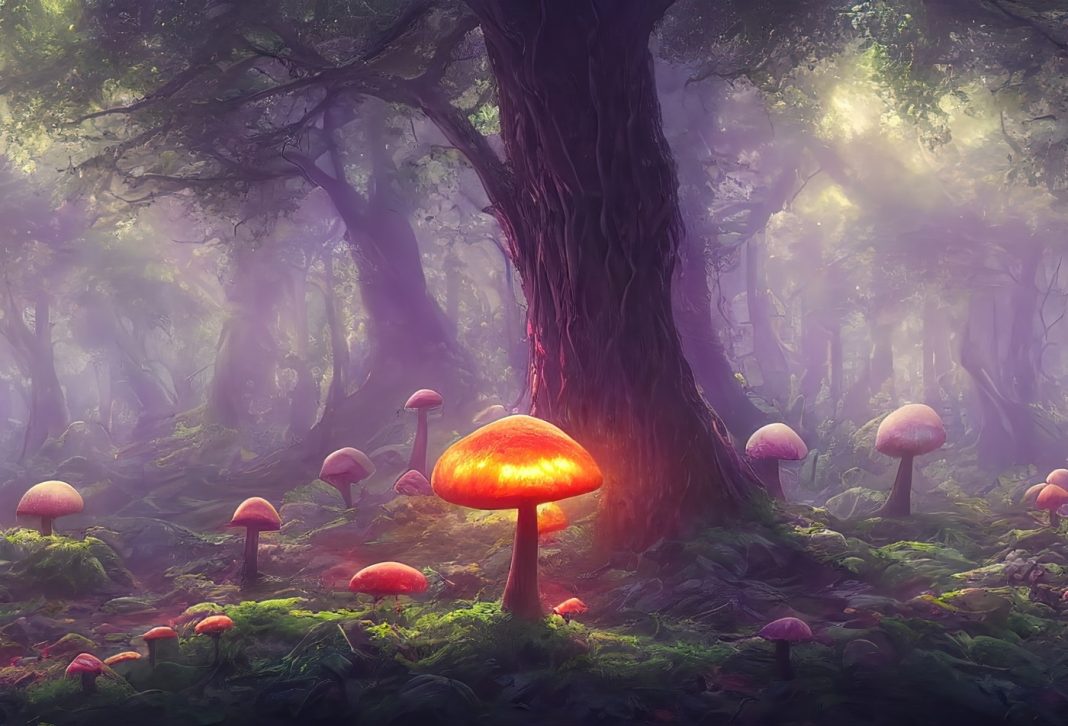Global waste is expected to increase to 3.4 billion tons by 2050. To put it into perspective, by that time, there will be more plastic waste than fish in the world’s oceans. So we need to make some changes fast. Scientists are looking at numerous different ways to weaponize natural resources in the fight against pollution. One of the more interesting methods they’ve come across is known as mycoremediation – in which mushrooms absorb various toxins from the earth. From wildfire zones in California to oil spills in South America, mushrooms are working their magic to make the world a better and safer place.
Global pollution statistics
Pollution is not a new phenomenon, but it has definitely become a much bigger problem over the last century as industry and agriculture became cornerstones of our society. Use of pesticides and herbicides in crops, urbanization, forest fires, and overuse of plastic products, and inadequate waste management have escalated the pollution issues at an alarmingly rapid rate, especially in low- and middle-income communities and countries. Economically impoverished people who do not have the resources to protect themselves from pollution tend to suffer the worst outcomes.
Although some environmental regulations over the years helped to cut back on the toxic waste we create (think about how bad it was in 1970s era New York) it’s still not enough. To this day, pollution is the leading environmental cause of disease and early death. Pollution causes more than 9 million premature deaths annually, the majority of them due to air pollution. This is several times more than global deaths from tuberculosis, AIDs, and malaria combined.
Pollution also depletes the natural resources we need to live. According to a pollution overview from The World Bank, “Intensive material consumption depletes natural resources and causes negative environmental impacts at every stage of the product life-cycle including production, use phase, and end-of-life.” In the US alone, nearly 50% of freshwater is too polluted for drinking, swimming, or fishing. This not only impacts the water itself, put all the plants and other animals near the waterways that rely on that water. What happens when money doesn’t matter anymore because there is no clean water to drink, food to eat, or air to breathe?
What is bioremediation?
Bioremediation is the process of using living organisms or microbes to remove or neutralize contaminants from the earth. Bacteria is often used to “consume pollutants) and convert them into harmless and sometimes beneficial compounds like carbon dioxide, but a variety of plants, including hemp, can be used to detoxify soil, water, and air. The latter is a subset of bioremediation known as phytoremediation.
It’s amazingly effective, even on products once believed to be irremediable like oil and plastic. For example, a study led by Kenneth J. Locey of Rush University Medical Center and published in Pnas a few years ago found that certain microbes can “degrade between 50% and 60% of [automobile] fuel, convert mercury to non-harmful chemicals, consume plastics at the bottom of the ocean, and even thrive within oil spills.” All this in just a few weeks.
The research paper explains: “Bacteria have evolved for billions of years, and, as a result, they have developed a very diverse range of metabolic pathways that makes them capable of obtaining energy from virtually every organic compound. Their ubiquity in nature, metabolic diversity, high growth rates, and their ability for horizontal gene transfer, shapes them into perfect candidates for bioremediation of pollutants, including fuels.”
The team conducted their study by examining the surfaces of automobile tank lids to find what type of different strains of bacteria have survived or developed there. Any such microbes would be adept at living under high stress situations, as the tank lids come in contact with fuel and high temperatures. Simplified, they would then take the bacterium, multiply them, and introduce them in greater numbers back into the polluted environments.
Co-author of the study, Biologist Manuel Porcar Miralles, added that, “there are two fundamental biological strategies: either you wait for the microorganisms to act on their own or you can intervene, inoculating the selected ones because they degrade hydrocarbons particularly well.”
Thank you for stopping in. Head over to the Cannadelics Weekly Newsletter for direct updates; and get access to awesome deals on cannabis buds, vapes, edibles, smoking devices and equipment, cannabinoid compounds, and some psychedelic products! Go get high responsibly!
Cleaning the world with mushrooms
Mycoremediation is a type of bioremediations that uses fungi for pollution removal. Different fungi function in different ways when it comes to cleaning up toxins. Some use their mycelium network, which is their very complex root system, to absorb, degrade, and convert various toxins into compounds that are no longer harmful.
Other mushrooms, like oysters for example, absorb toxins toxins and store them in their fruiting bodies (caps). In these scenarios, the mushroom caps would then need to be treated as if they are toxic and properly discarded. Afterwards, a new generation of mushrooms can be grown in the same area and most toxins will be completely removed after a few flushes.
Mycoremediation is already being used throughout the world to clean different areas of concern. In California, where record wildfires have been recorded over the last few years, researchers are testing different strains and methods for mycoremediation in Paradise, a town in Butte County, California, that was decimated by a wildfire in 2018.

In Washington state, ecologists from The Lands Council managed to reduce levels of polychlorinated biphenyls (PCBs) in the Spokane River by using native bacteria and fungi. By the end of their experiment, there were 46% less PCBs in the water. Mushrooms were also used to clean up toxic oil pits left in Ecuador, in what is known as The Amazon Mycorenewal Project. Scientists and mycologists are also trying to determine if mycoremediation is effective on heavy metals.
Hundreds of non profit organizations and independent research teams are developing all over the world, and they’re promoting mycoremediation as one of the safest, most effective, and least expensive solutions to our rampant pollution problem. Fungi are also becoming a go-to alternative for many local clean crews as well.
Air pollution – the silent killer
It’s clear that mycoremediation works well for water and soil, but what about air pollution? Air pollution is the greatest environmental threat to public health, globally. Here are a few statistics you should know:
- Air pollution alone accounts for an estimated 7 million premature deaths every year (out of the 9 million total caused by overall pollution).
- In 2019, just under 99 percent of the world population was living in a place where the World Health Organization’s strictest air quality guideline standards were not met.
- Exposure to air pollution can lead to a wide range of diseases including stroke, chronic obstructive pulmonary disease (COPD), ischemic heart disease, and lung cancer.
- Air pollution also has a huge impact on our largest organ – the skin. Toxins in the air can cause eczema, acne, psoriasis, and even skin cancer.
As it turns out, fungi can be useful for cleaning up the air as well. Data suggests that fungi can break down up to 80% of carbon they absorb and turn it into food for other organisms. As per the research, “When the mycelium-fused fungi grows, it safely sponges up hydrocarbons, helping create cleaner air in towns and cities”.
As such, a design student at London’s Brunel University developed a prototype that uses hexagonal mycelium tiles to cover building facades. “Myco-Hex tiles are a great example of biomimicry,” said Brunel Design School lecturer, Ayca Dundar. “It is using nature to solve a global problem that is also fully sustainable and renewable.”
In Northern India, one of the most heavily pollution regions in the world, researchers have created a fungal spray for farmers to use that will help degrade agricultural waste from local crops. Initially, the goal was to cut back on the air pollution which plagues their major cities, but there are other obvious benefits like cleaner soil and better-quality food.
Final thoughts
“For so many years, humans have worked against nature and have slowly destroyed it,” says Thomas Sault, creator of Netflix documentary Fantastic Fungi. “Instead of working against nature, we need to look to nature and see that it contains the answers to our environmental issues.”
It certainly seems that bio and mycoremediation are the long-awaited solutions to our problem with environmental toxins. We’re quickly getting to the point where the majority of our planet and natural resources are polluted, and we desperately need cost effective alternatives that get the job done. Once again, it’s mushrooms to the rescue.
Welcome one and all! Cool that you made it to Cannadelics.com. We’re an independent news platform with an eye on the burgeoning cannabis and psychedelics fields of today. Join us frequently to stay in-the-know on everything going on; and subscribe to the Cannadelics Weekly Newsletter, so you never miss a single thing.





